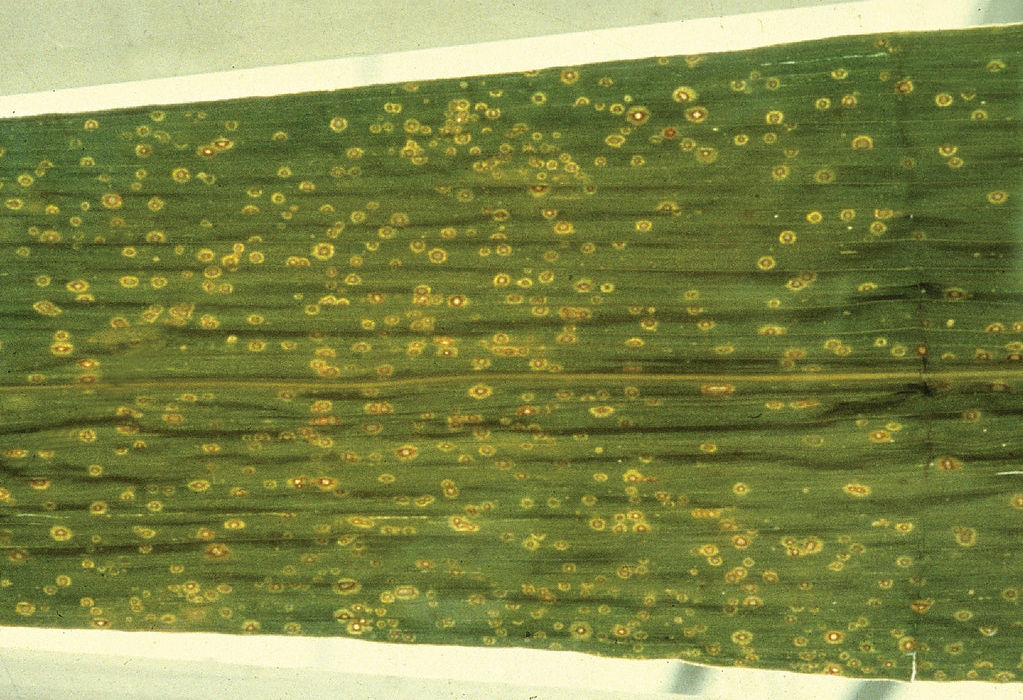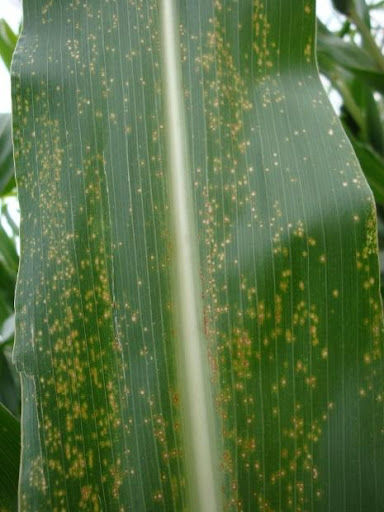Identification and Management of Curvularia Leaf Spot in Corn
June 2, 2025
Curvularia leaf spot is a fungal disease in corn caused by the fungus Curvularia lunata. It was first discovered in the United States in 2017 in Louisiana and has spread to other states. Curvularia leaf spot is of tropical origin while also having a large presence in China. While the impact of the disease is not yet known it is important to be able to identify and manage the disease.
The pathogen, C. lunata, thrives in warm and humid conditions. The fungal spores are spread via splashing rain or wind. Over winter, the fungus survives in corn residue and fields that are managed with no-till or conservation tillage which are most likely to harbor more inoculum. Curvularia can be identified by its small lesions with a brown outer ring (Figure 1). When held up to sunlight, the lesions appear more yellow than brown. Most lesions are 1/16 to 1/8 inch. The severity can vary from a few spots per leaf to clusters taking over the entire leaf. Most lesions are found in the mid to upper canopy of the plant. The disease is similar in appearance to eye spot, a fungal disease caused by Kabatiella zeae which is characterized by small, circular lesions with tan centers, brown or purple margins, and yellow halos on corn leaves (Figure 2). However, eye spot thrives at cool temperatures and wet conditions and can cause yield loss if it progresses to the upper leaves.


Currently, there are no fungicides labeled for managing curvularia leaf spot. However, since we know that the fungus overwinters in corn residue, we can manage it in different ways. One option, though not desirable for conservation tillage practices is tillage. When residue is buried, it breaks down faster which helps reduce the movement of spores from the residue to living plants. Another option is crop rotation. Curvularia can infect many grasses; therefore, rotating fields to a broadleaf crop such as soybean can help break the cycle. Continuous corn fields have the potential to become infected the most. Research has shown that some corn products are more tolerant to curvularia leaf spot than others; however, there are no ratings currently.
This disease is something to keep an eye on as we learn more about it since it is still relatively new in the United States.
Channel Agronomist
Colby Rash
Sources
Henrickson, M. and Koehler, A. 2020. Curvularia leaf spot. Fact Sheets and Publications. Agriculture & Natural Resources. University of Delaware. https://www.udel.edu/academics/colleges/canr/cooperative-extension/fact-sheets/curvularia-leaf-spot/
Kelly, H.M. and Brown, S. Curvularia leaf spot. The University of Tennessee Institute of Agriculture. https://guide.utcrops.com/corn/foliar-disease/curvularia-leaf-spot/
Web sources verified 4/28/25 1110_544001